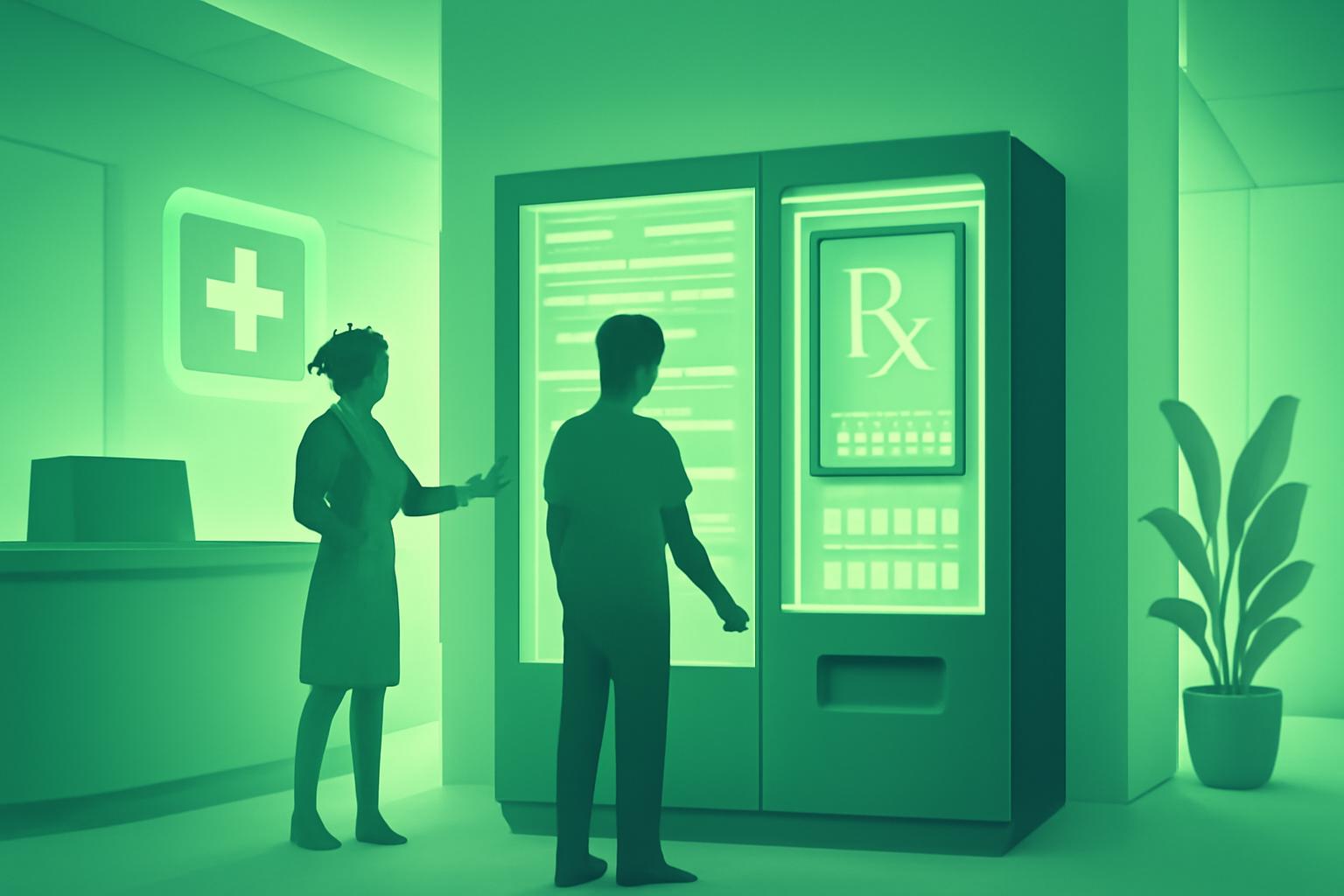After a healthcare provider issues a prescription, patients can opt to have it sent directly to Amazon Pharmacy for pickup at the in-office kiosk. Using the Amazon app, patients check out digitally, with medications typically ready within minutes.
The kiosks stock a curated selection of commonly prescribed drugs, including antibiotics, inhalers, and blood pressure medications. Inventory is customized based on the prescribing trends of each individual clinic location. Notably, controlled substances and medications requiring refrigeration are excluded from the kiosks.
Digital Integration and Patient Support
The Amazon app provides patients with transparent pricing, showing upfront costs, available discounts, and estimated insurance copays. Additionally, patients can access licensed pharmacists for consultations via video or phone directly through the app, ensuring professional guidance when needed.
“We know that when patients have to make an extra trip to the pharmacy after seeing their doctor, many prescriptions never get filled,” said Hannah McClellan, vice president of operations at Amazon Pharmacy.
Context: Challenges in the Traditional Pharmacy Sector
The U.S. pharmacy industry faces significant headwinds. Rite Aid recently shuttered all remaining stores, CVS has closed over 1,000 locations since 2021, and Walgreens has reduced its footprint by 500 stores in the past year. Amazon’s kiosks could intensify disruption in the brick-and-mortar pharmacy landscape.
Amazon’s Broader Healthcare Strategy
This new kiosk initiative represents Amazon’s latest effort to deepen its footprint in healthcare. The company acquired online pharmacy PillPack for $750 million in 2018, launched Amazon Pharmacy in 2020, and purchased primary care provider One Medical in 2022.
FinOracleAI — Market View
Amazon Pharmacy’s introduction of prescription vending machines at One Medical clinics signals a strategic push to streamline medication access and enhance patient convenience. By integrating digital tools with in-person care, Amazon is positioned to reshape pharmacy fulfillment and disrupt traditional retail models.
- Opportunities: Increased patient adherence through immediate access, expanded telehealth integration, and scalable kiosk deployment across healthcare facilities.
- Risks: Regulatory constraints on controlled substances, logistical challenges in inventory management, and potential resistance from established pharmacy chains.
Impact: This innovation is likely to accelerate the shift toward digital-first pharmacy services, putting additional pressure on traditional pharmacies while enhancing patient experience and operational efficiency in healthcare delivery.
Amazon Pharmacy Launches Prescription Vending Machines at One Medical Clinics
Amazon announced on October 8, 2025, the rollout of prescription vending machines at its One Medical clinics, starting in Los Angeles this December. These new in-office kiosks, operated by Amazon Pharmacy, enable patients to collect their prescriptions immediately following their medical appointments.
How the Prescription Kiosks Work
After a healthcare provider issues a prescription, patients can opt to have it sent directly to Amazon Pharmacy for pickup at the in-office kiosk. Using the Amazon app, patients check out digitally, with medications typically ready within minutes.
The kiosks stock a curated selection of commonly prescribed drugs, including antibiotics, inhalers, and blood pressure medications. Inventory is customized based on the prescribing trends of each individual clinic location. Notably, controlled substances and medications requiring refrigeration are excluded from the kiosks.
Digital Integration and Patient Support
The Amazon app provides patients with transparent pricing, showing upfront costs, available discounts, and estimated insurance copays. Additionally, patients can access licensed pharmacists for consultations via video or phone directly through the app, ensuring professional guidance when needed.
“We know that when patients have to make an extra trip to the pharmacy after seeing their doctor, many prescriptions never get filled,” said Hannah McClellan, vice president of operations at Amazon Pharmacy.
Context: Challenges in the Traditional Pharmacy Sector
The U.S. pharmacy industry faces significant headwinds. Rite Aid recently shuttered all remaining stores, CVS has closed over 1,000 locations since 2021, and Walgreens has reduced its footprint by 500 stores in the past year. Amazon’s kiosks could intensify disruption in the brick-and-mortar pharmacy landscape.
Amazon’s Broader Healthcare Strategy
This new kiosk initiative represents Amazon’s latest effort to deepen its footprint in healthcare. The company acquired online pharmacy PillPack for $750 million in 2018, launched Amazon Pharmacy in 2020, and purchased primary care provider One Medical in 2022.
FinOracleAI — Market View
Amazon Pharmacy’s introduction of prescription vending machines at One Medical clinics signals a strategic push to streamline medication access and enhance patient convenience. By integrating digital tools with in-person care, Amazon is positioned to reshape pharmacy fulfillment and disrupt traditional retail models.
- Opportunities: Increased patient adherence through immediate access, expanded telehealth integration, and scalable kiosk deployment across healthcare facilities.
- Risks: Regulatory constraints on controlled substances, logistical challenges in inventory management, and potential resistance from established pharmacy chains.
Impact: This innovation is likely to accelerate the shift toward digital-first pharmacy services, putting additional pressure on traditional pharmacies while enhancing patient experience and operational efficiency in healthcare delivery.













